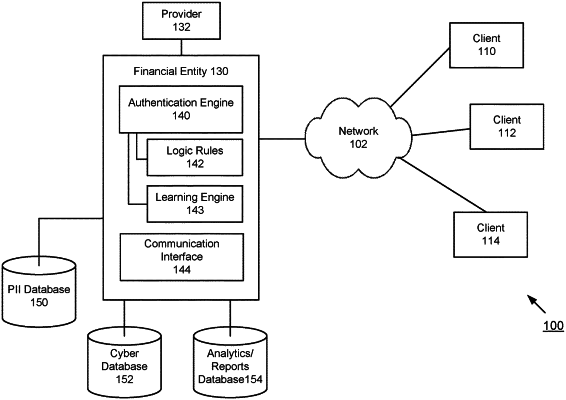| CPC H04L 63/102 (2013.01) [G06N 20/00 (2019.01); G06Q 20/401 (2013.01); G06Q 20/4016 (2013.01); H04L 63/08 (2013.01); H04L 63/0861 (2013.01)] | 20 Claims |

|
1. A system that aggregates client data and cyber indicators to authenticate a client, the system comprising:
a memory that stores and maintains a plurality of client profiles; and
a computer server comprising at least one computer processor and coupled to the memory, the computer server programmed to:
receive, via an electronic input, a request to access a financial account of the client, the request comprising a client identifier and a password;
retrieve a client profile, from the memory, based on the client identifier and the password, the client profile including an aggregation of data into a plurality of data indicators;
determine that the request to access the financial account is one of within a predetermined time period or from a geographic location;
determine, in response to the request to access the financial account being within the predetermined time period or from the geographic location, an optimal number of the plurality of data indicators;
generate a risk score based on a weighting for each of the plurality of data indicators included within the optimal number, the weighting representing a confidence in the accuracy of each of those data indicators;
grant access to the financial account of the client in response to the risk score exceeding an account access risk threshold score; and
apply machine learning to the risk score generation, wherein the machine learning (1) analyzes behavior of a requestor and a transaction history to determine if the behavior is outside of an expected behavior range and updates the risk score based on a determination result, and (2) applies feedback to reduce improper denials of authorization requests.
|